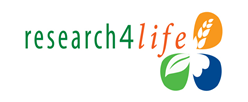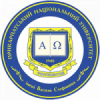Author Guidelines*
1. The submitted manuscript is considered for publication if it represents topical and significant scientific problems, written in English and has not previously been published (and not submitted to other journals). The recommended volume of the manuscript is between 8 and 20 pages (problem-theoretical, review and discussion manuscripts - up to 20 pages; research manuscripts - up to 16).
2. The manuscript is prepared in A4 format (Microsoft Word). Font - Palatino Linotype, size - 11, line spacing -1.0, paragraph indentation - 0.63 cm. Fields: top, bottom, right, left 20 mm. Fields according to the journal template (see docx template (Appendix 1), in which the article must be submitted).
Upper left corner – UDC, DOI and article code according to JEL CLASSIFICATION for articles in the field of economics (Number of codes - 2 to 5). JEL CLASSIFICATION CODES GUIDE: https://www.aeaweb.org/jel/guide/jel.php
Below - at one interval - the title of the manuscript (in bold letters in the center, size - 13).
Below - at one interval - the last name, first name of the author (authors), size - 12.
Below - at one interval - the manuscript as follows:
- abstract in English (size – 10);
- keywords (from 5 to 7) in English (size – 10);
- structural elements of the manuscript depend on the type of the submitted manuscript (size - 12), for
example:
• research articles (1. Introduction. 2. Research methods. 3. Results and Discussion. 4.Conclusions);
• theoretical articles (1. Introduction. 2. Theoretical framework / literature review 3. Research objective, methodology and data. 4. Results and discussion. 5. Conclusions);
• review articles (1.Introduction. 2. Literature review, generalization of main statements. 3. Discussion. 4. Conclusions);
- after the main text of the manuscript we recommend to include “Acknowledgments”, which shows the importance of contributions of other researchers to the submitted research work (which were not included in the authorship) or organizations (universities, grants, etc.) that provided funding for the study. For example: The research was performed within the project "Financial determinants of economic growth of regions and territorial communities based on the behavioral economy" (registration number 2020.02 / 0215), supported by the National Research Foundation of Ukraine.
- After "Acknowledgments"- at one interval - a list of regencies (References);
- below - at one interval - the name and surname of the author (authors), degree, academic title, position, full
name of the institution, city, country (in English);
- ORCID ID;
- Address;
- E-mail of the authors;
- below - at one interval - the name and surname of the author (authors), degree, academic title, position, full
name of the institution, city (in Ukrainian);
- below - at one interval:
- title of the article (in Ukrainian);
- annotation (in Ukrainian);
- keywords (in Ukrainian).
3. References to the used source are given in alphabetical order and are made in accordance with the
requirements of the international bibliographic standard APA (According to the seventh edition (2020)).
In the APA reference list, the writer should provide the author, year, title, and source of the cited work in in alphabetical list of references. If a reference is not cited in the text, it should not be included in the reference list. The reference format varies depending on the document type (e.g., journal article, edited book chapter, blog post, webpage), but broadly speaking always follows the same pattern of author, date, title, source. If the source is undated, the abbreviation n.d. (no date) is used.
|
Reference type |
Template |
Example |
|
Journal article with a DOI |
Author, A., & Author, B. (year). Title of article. Journal Title, Volume(Issue), page range. DOI |
Schmidt, F. L., & Oh, I.-S. (2016). The crisis of confidence in research findings in psychology: Is lack of replication the real problem? Or is it something else? Archives of Scientific Psychology, 4(1), 32–37. https://doi.org/10.1037/arc0000029 |
|
Whole book |
Author, A., & Author, B. (year). Title of book. Publisher. |
Brown, B. (2010). The gifts of imperfection: Let go of who you think you're supposed to be and embrace who you are. Hazelden. |
|
Edited book chapter with a DOI |
Author, A., & Author, B. (year). Title of chapter. In E. Editor & A. Editor (Eds.), Title of book (pp. xx–xxi). Publisher. DOI |
Singh, A. A., Hwahng, S. J., Chang, S. C., & White, B. (2017). Affirmative counseling with trans/gender-variant people of color. In A. Singh & L. M. Dickey (Eds.), Affirmative counseling and psychological practice with transgender and gender nonconforming clients (pp. 41–68). American Psychological Association. https://doi.org/10.1037/14957-003 |
|
Webpage on a website |
Author, A., & Author, B. (year). Title of page. Site Name. URL Group Author. (year). Title of page. URL |
American Psychological Association. (n.d.). APA divisions. https://www.apa.org/about/division/ |
More details on the requirements regarding the order of references to the source in the text of the article can be found in the resource: Appendix 2 (recommended reading)
If the reference is not in English, it should be indicated in parentheses, for example, if the reference is in Ukrainian, it should be noted: (in Ukr.)
To ensure compatibility with the international DOI system, it is advisable to check References for DOI identifiers. To do this, one must first copy the text References (without numbering!), go to the website https://search.crossref.org/references, paste the copied text in the field "Match references to DOIs using Crossref Metadata Search fuzzy matching" and perform the "Match to DOIs" operation. If DOIs are found for some items, they should be checked (visit them) and, if correct, added as an Internet link in the form of "DOI:". If the item is available online but does not have a DOI, and it has a URL that will work, give the URL. Do not give a URL that will not work. If the resource is available on the Internet but does not have a DOI and it has a URL that will work, be sure to provide the URL (active).
4. The article shall be accompanied by an abstract of at least 1800 characters in English and Ukrainian.
The abstract should be concise and meaningful, giving a clear and objective idea of the main essence of the article. The abstract cannot contain results that are not presented and are not substantiated in the body of the article. The abstract should not contain abbreviations and quotations. The abstract should state the purpose of the article, briefly describe the author's contribution to the solution of the investigated scientific problem, determine the scientific novelty and practical significance of the obtained results, and summarize the main conclusions of the conducted research.
5. The name and number of the figure are indicated below the figure (bold letters in the center). The name of the table is above the table (in bold letters in the center), the number in the right corner. Give the source after the figure and table.
Illustrative material (graphs, charts, figures and tables) should be made available in programs for further
editing: tables - in the Microsoft Word; charts - in Microsoft Excel or Microsoft Graph editor; figures - in the form of organizational charts using the drawing panel Microsoft Word editor; formulas - in the formula editor of Microsoft Equation; photos should be saved in * .tiff or * .jpg format with a resolution of at least 300 dpi. The format of the tables and figures should only be in book form.
6. The manuscript prepared under the requirements has to be sent to the journal through https://journals.pnu.edu.ua/index.php/jpnu/about/submissions or e-mail: jpnu@pnu.edu.ua; with the subject of the letter: «Journal of Vasyl Stefanyk Precarpathian National University», Author's Name and indication of the scientific area of the article.
Manuscripts must be submitted in academic English language.
Manuscripts that do not meet the requirements will be returned to the authors.
A separate document (pdf format) must be sent with a cover letter detailing each of the authors of the
manuscript with personal signatures (see Appendix 3). This will indicate that the author has the copyright, including permission to use it freely.
* The updated Author Guidelines are valid for publications from the 2nd quarter of 2022.










